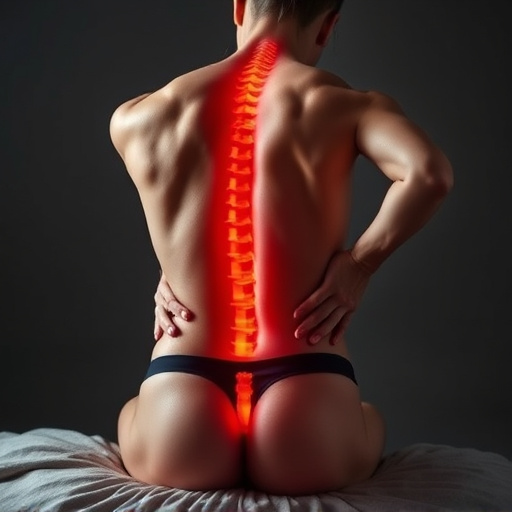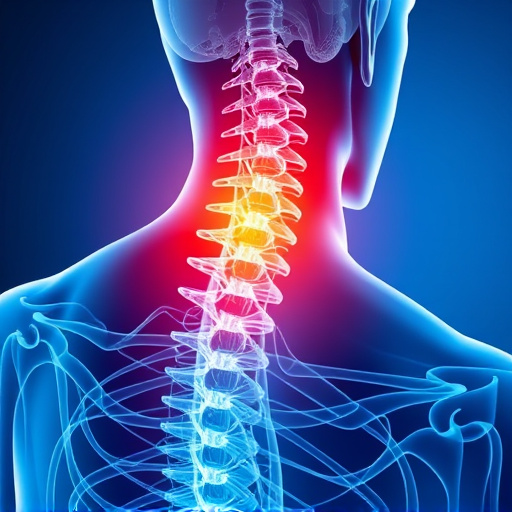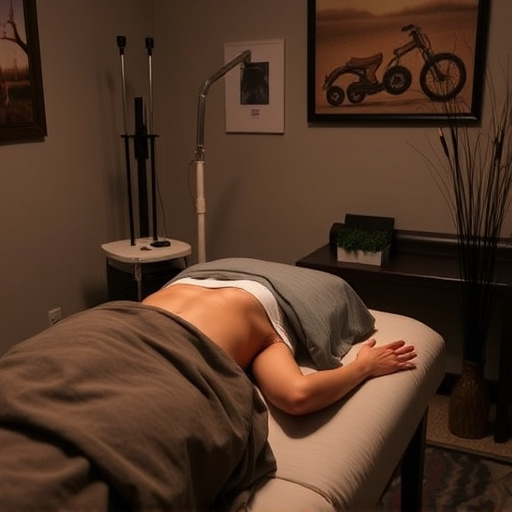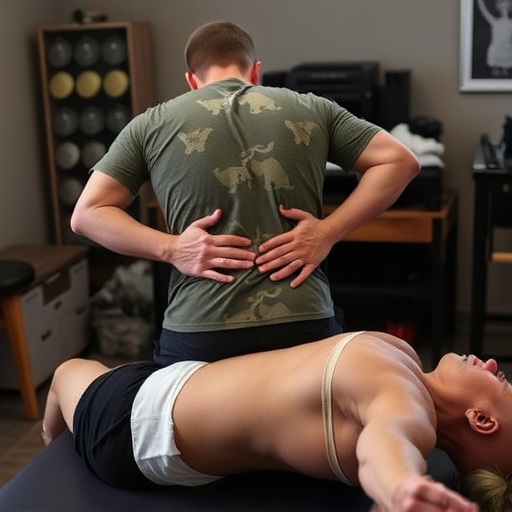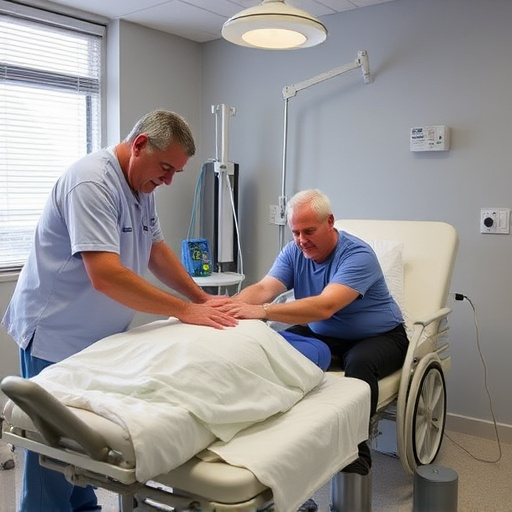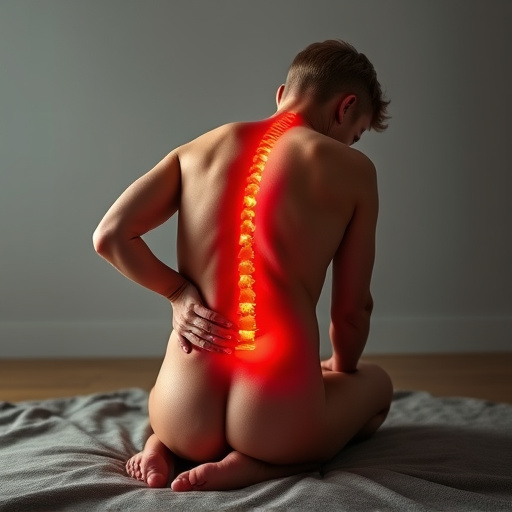Ergonomic injury treatment emphasizes proper posture to prevent and heal damage, targeting muscle imbalances causing chronic pain in neck, shoulders, and lower back. Assessing postural factors guides tailored interventions like exercises or shockwave therapy. Correcting spinal alignment through chiropractic care speeds recovery, reduces risk of recurring injuries, and promotes overall physical well-being. Regular chiropractic adjustments and ergonomic guidance foster a healthier lifestyle.
Posture plays a pivotal role in ergonomic injury treatment outcomes. From understanding the intricate connection between body position and potential injuries, to assessing postural factors that influence healing, correct posture alignment is key for long-term recovery. This article delves into these aspects, providing insights on how optimizing posture can enhance rehabilitation efforts and mitigate risks of recurring ergonomic injuries.
- Understanding the Posture-Injury Connection
- Assessing Postural Factors in Treatment Plans
- Correcting Posture for Long-Term Recovery
Understanding the Posture-Injury Connection
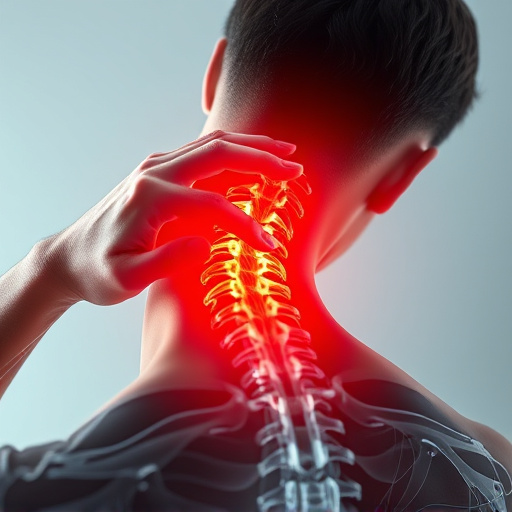
Maintaining proper posture is a cornerstone of ergonomic injury treatment. The connection between posture and injury is multifaceted. Poor posture can lead to imbalances in muscle strength and flexibility, causing some muscles to work harder than others. Over time, this imbalance can result in soft tissue injuries, particularly in the neck, shoulders, and lower back. For instance, slouching or sitting with a rounded spine places excessive strain on the spine’s natural curve, potentially contributing to chronic lower back pain.
Ergonomic interventions often focus on correcting these postural deficits to prevent further damage and promote healing. Techniques such as shockwave therapy for pain can be integrated into treatment plans to address underlying soft tissue injuries. By addressing posture and implementing targeted therapies, individuals can experience improved outcomes in their ergonomic injury treatment journey.
Assessing Postural Factors in Treatment Plans
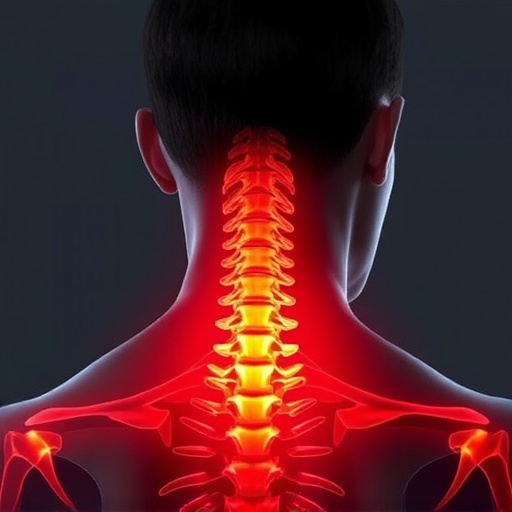
When developing treatment plans for ergonomic injury patients, assessing postural factors is paramount to effectiveness. A patient’s posture can greatly impact the success of any rehabilitation efforts. For instance, a patient with poor sitting posture may experience increased tension in certain muscle groups, leading to localized pain and potentially hindering recovery. Identifying these postural imbalances allows healthcare professionals to tailor interventions, such as specific exercises or adjustments (like those provided through chiropractic care), to address underlying causes rather than merely treating symptoms.
This consideration becomes especially crucial when dealing with conditions like whiplash treatment, where proper posture can facilitate the healing process. By incorporating assessments of spinal alignment and overall postural integrity into treatment plans, professionals ensure that patients receive holistic care that goes beyond addressing acute pain. This proactive approach fosters faster recovery and reduces the risk of recurring ergonomic injuries.
Correcting Posture for Long-Term Recovery
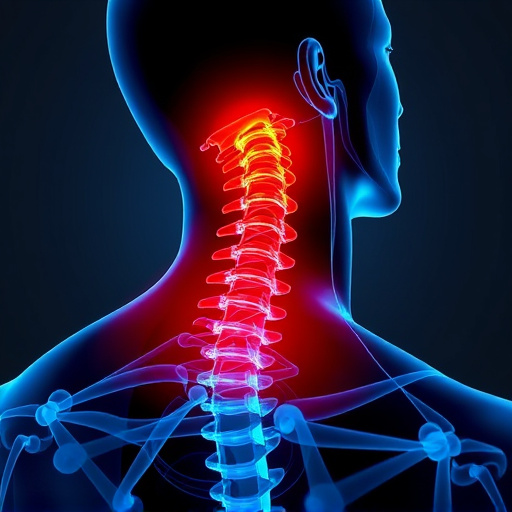
Maintaining proper posture is a cornerstone for long-term recovery from ergonomic injury treatment. Beyond temporary pain relief, correcting posture through spinal adjustments and chiropractic care can address the root causes of musculoskeletal injuries often associated with prolonged periods of poor positioning. This proactive approach not only prevents recurring issues but also enhances overall physical well-being.
By focusing on aligning the body correctly, individuals can reduce the strain on muscles, joints, and nerves, which are common consequences of bad posture. Regular chiropractic care plays a pivotal role in this process, offering gentle adjustments to the spine and guidance on ergonomic principles for daily activities. This holistic strategy ensures that not only symptoms are alleviated but also that the body is equipped with the tools needed to maintain optimal health over time, thereby fostering a healthier and more productive life.
Posture plays a pivotal role in ergonomic injury treatment, influencing recovery outcomes significantly. By understanding the connection between posture and injuries, assessing postural factors in treatment plans, and implementing corrective measures, individuals can expedite their journey towards long-term recovery. Incorporating posture corrections into rehabilitation strategies ensures a holistic approach to ergonomic injury treatment, fostering better health outcomes and enhanced quality of life.








